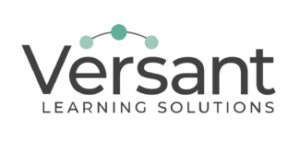Blended learning is the future of medical affairs training.
If your training to date included a stack of PDFs, a few PPTs, and a webinar or two, then your team is missing out.
Your team could improve efficiency, enhance operations, and provide more value to internal and external stakeholders with a few adjustments to your training program.

TL: DR
Blended learning is more than pairing some prework with an eLearning module and an online discussion. There are many ways to create engaging training journeys that support your soft skill and therapeutic training needs.

Continuous learning in a VUCA world
If you are not formally training your medical affairs team, you are missing out.
Data is constantly updating, and as the face of the company, your team must answer questions and provide context to healthcare providers, payers, and advocacy groups.
A culture of continuous learning is required.

Change to the Learning Mix
Forty-seven percent of training professionals on a 21 July 2021 webinar reported that their training delivery had radically changed over the last 18 months – on the scale of an 80% pivot. That is a drastic change but also a great opportunity!
What are the possibilities?
These same professionals expect that the learning provision will change long-term – we won’t ever return to the context and expectations of our 2019 selves.
Industry consultants like Fosway Group agree. They report that only 1% of organizations believe their approach to learning and development will return to the pre-pandemic “normal.”

Blended Learning
At its best, blended learning mixes learning modes and channels to create a personalized mix to support organizational goals.
Yes, those PDFs and PPTs and vILT webinars are part of the mix – but they are not the extent of the mix.
Add opportunities for application, exploration, problem-solving, discussion, and brainstorming to the types of assets offered.
Provide options like virtual workshops, mobile training, drip training, and scenario-based learning to enhance your training program.
The team will benefit from the variety of choices that give them flexibility when managing their territory.

Build a Journey
The best-blended learning programs are not just a list of options on how to learn a selected topic.
Instead, they should create a learning journey.
There are so many possibilities to explore, but more on that next week!

Proven Value for Medical Affairs
Versant has helped many Medical Affairs teams develop a blended training program for their teams.
Start with a pilot program to see how its flexible nature can help you support team training needs.
Contact Us to Develop Your Strategy
If you would like to discuss your team’s situation, please get in touch with us.
References
1. Tucker, C.R., Balance With Blended Learning: Partner With Your Students to Reimagine Learning and Reclaim Your Life (Corwin Teaching Essentials). 1st edition ed. 2020: Corwin.
2. Hofmann, J., Blended Learning (What Works in Talent Development). 2018: Association for Talent Development. 208 pages.
3. Aristotle, S., S. Subramanian, and S. Jayakumar, Effectiveness of flipped classroom model in teaching histology for first-year MBBS students based on competency-based blended learning: An interventional study. J Educ Health Promot, 2021. 10: 152

